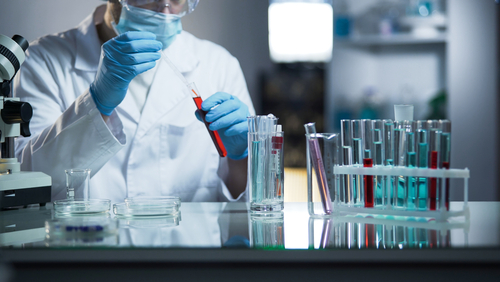IGFBP-5 Protein Promotes Fibrosis by Increasing Pro-Fibrotic Factors, Study Reports

Evidence that the IGFBP-5 protein contributes to the development of pulmonary fibrosis was supported by new research finding that its higher-than-normal levels in people with fibrotic disease help to drive other pro-fibrotic proteins and factors.
The study, “IGFBP-5 Promotes Fibrosis via Increasing Its Own Expression and That of Other Pro-fibrotic Mediators,” adds to a growing body of literature suggesting that IGFBP-5 is an important player in mediating fibrosis. It was published in Frontiers in Endocrinology.
Pulmonary fibrosis is a major complication of several diseases, including systemic sclerosis (SSc) and idiopathic pulmonary fibrosis (IPF), and has limited therapeutic options.
Studies have shown that expression of IGFBP-5 — meaning the activity of the gene responsible for producing this protein — is increased in the skin and lung tissues of patients with SSc and IPF. Additionally, it was shown in multiple models that IGFBP-5 increases the production of proteins in the extracellular matrix — the space around cells. The extracellular matrix provides a surface for adhesion and a space for other signaling components.
IGFBPs (insulin-like growth factor-binding proteins) are made up of six different proteins that are secreted from the cell into the extracellular matrix.
Researchers wanted to better understand if IGFBP-5 could contribute to fibrosis development by regulating the expression of known pro-fibrotic factors, such as CTGF and LOX.
By adding recombinant IGFBP-5 to human primary lung fibroblasts from healthy donors, they found that IGFBP-5 increases the expression of both CTGF and LOX.
The researchers also confirmed that IGFBP-5 increased the levels of extracellular matrix-related proteins, namely collagen 1A1 and fibronectin, thereby promoting fibrosis.
And they showed that IGFBP-5 could stimulate its own expression, creating a positive-feedback loop that can perpetually promote fibrosis.
Of note, these changes in gene expression were seen early after addition of IGFBP-5 to lung cells, suggesting that they are early response genes and are important in promoting later, downstream events.
Increased levels of the pro-fibrotic proteins CTGF and LOX were also seen when the research team used a viral-based gene therapy to increase the expression of IGFPB-5.
Another way to assess the function of a gene is by decreasing its activity. For this purpose, the team used small-interfering RNA technology to lower the expression of IGFBP-5 in lung fibroblasts from healthy donors or patients with IPF or SSc.
Decreasing IGFBP-5 levels had different effects in healthy donors and SSc or IPF patients. Decreasing IGFBP-5 in cells from IPF patients also lowered the expression of the pro-fibrotic factor CTGF, but no significant difference in CTGF levels after silencing IGFBP-5 expression was seen in those from healthy donors. There was a trend toward decreased CTGF levels in lung cells from patients with SSc, but it do not reach statistical significance.
“Together, our data extend our previous findings and demonstrate that IGFBP-5 exerts its pro-fibrotic activity by directly inducing expression of ECM [extracellular matrix] and pro-fibrotic genes,” the researchers wrote.
The team believes that IGFBP-5 is a major player in the development of pulmonary fibrosis, and that it “likely acts in concert with other growth factors to drive fibrosis and tissue remodeling.” Therefore, “strategies to inhibit IGFBP-5 function might be effective for the amelioration of fibrosis,” the team concluded.






